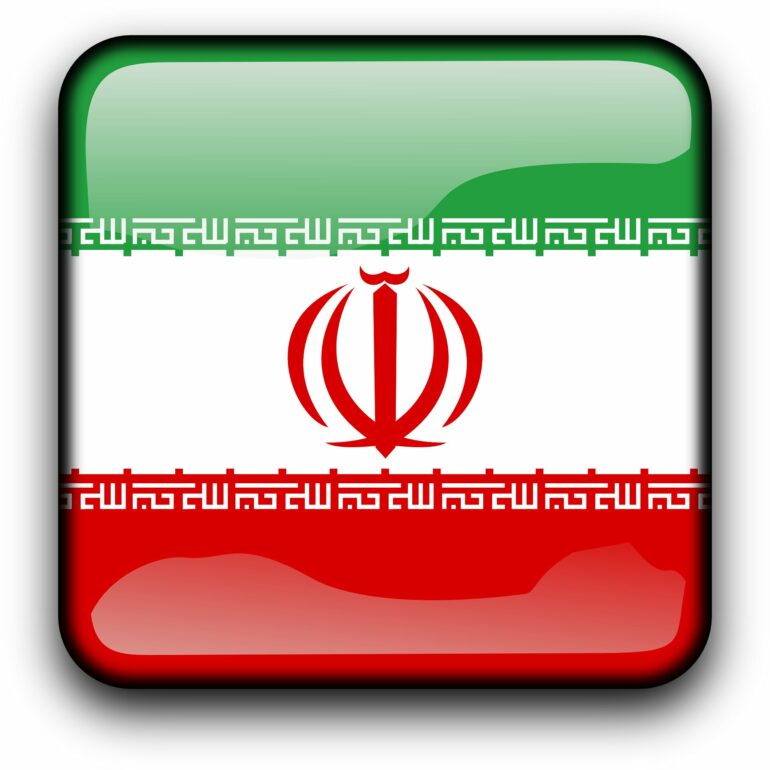Thousands of state-sponsored propaganda tweets on the Iranian nuclear deal have been analyzed using artificial intelligence by experts at the University of Portsmouth.
The findings show that natural language processing and machine learning tools can help analyze large-scale data and give insight into Iranian social media strategy.
Computing experts started with an initial dataset of over nine million tweets from nearly 6,000 accounts in 67 languages, which Twitter had identified as being linked to the Iranian state.
They filtered this dataset by language, date and key term, leaving over 24,000 tweets, which were then analyzed for their sentiment and objectivity. Sentiment analysis is used to gauge opinions on a topic and determine emotional tone.
Lead author, Michael Barrows, who worked on the research while at the University of Portsmouth, said, “We found that the tweets had high objectivity scores, particularly for tweets labeled as sentimentally neutral. This supports the argument that Iran could be imitating legitimate news outlets in order to provide credibility to their propaganda view points. Given that social media platforms are opening their verification programs to paying customers, the potential for influencing the discourse around various topics using objective language is significant.”
The research investigated the potential to automatically label and detect whether tweets were positive, neutral or negative, using five machine learning algorithms.
Dr. Ella Haig, Reader in Artificial Intelligence from the University’s School of Computing, said, “The number of people obtaining news updates through social media has increased, which means it’s being used to push narratives and propaganda that can influence discourse around various topics. Misinformation is a growing concern and it is increasingly difficult for users to differentiate between false and true information.”
“There is a need for approaches that use automatic processes to support the detection and analysis of misinformation. Twitter might not be the ‘real world’, but it is nonetheless a significant phenomenon because of its out-sized influence on world events.”
Iran’s nuclear program has been one of the most significant security issues on the international stage for the past two decades, but this is the first time Iran’s online information related to the nuclear deal has been studied.
The data was filtered by language to ensure all tweets retained were in English. English-language tweets were deemed significant because they are likely aimed at an international audience, particularly citizens and elites in countries involved in the negotiation of the nuclear deal.
They were then filtered by date, so all tweets published between August 2013 and December 2018. These dates were chosen because Iranian President Rouhani was inaugurated in August 2013 and former US President Trump withdrew the U.S. from the Iran nuclear agreement in May 2018.
The tweets were finally filtered by key terms such as ‘JCPOA’, ‘irandeal7’, ‘nuclear talks’ and ‘negotiation’.
Dr. Haig said, “The study found that the dataset contained a similar number of positive and negative tweets, which raises questions around whether this was a deliberate information operation. There could be parallels with Russia’s strategy of sowing confusion by swamping Twitter with tweets, rather than overtly sharing messages for or against the nuclear deal.”
“The aim of this research was to facilitate the analysis of state-sponsored propaganda tweets in an (semi-)automatic manner and obtain insights that would not be possible otherwise due to the large volume of data.”
The paper is published in IEEE Transactions on Computational Social Systems. It is co-authored by Michael Barrows, a former Masters of research student from the University of Portsmouth’s School of Computing and Dr. Dara Conduit, a lecturer in political science, from the University of Melbourne.
Dr. Conduit said, “As a political scientist, this collaboration with computer science colleagues underlined why we need to work together to understand the problems the world faces today. The dataset is too large to have been meaningfully analyzed by humans alone, so the AI tools provided a key opportunity for us to understand how the Iranian regime was conveying messages about the nuclear deal online when it thought that no one was watching.”
The research team was able to access this dataset through Twitter’s Election Integrity Project, which shared ‘fake’ accounts with a number of research teams that Twitter had identified as linked to state-based disinformation campaigns and subsequently deleted from the platform.
Dr. Conduit added, “This provided a rare opportunity to analyze state-based disinformation campaigns, because it is often very difficult to identify these kinds of accounts with any certainty because they are actively trying to be invisible. The Election Integrity Project helped us to get around this challenge by giving us access to known artifacts of state information operations.”
More information:
Michael Barrows et al, Sentiment and Objectivity in Iranian State-Sponsored Propaganda on Twitter, IEEE Transactions on Computational Social Systems (2023). DOI: 10.1109/TCSS.2023.3273729
Provided by
University of Portsmouth
Citation:
New research uses AI to analyze propaganda tweets on Iranian nuclear deal (2023, May 25)



